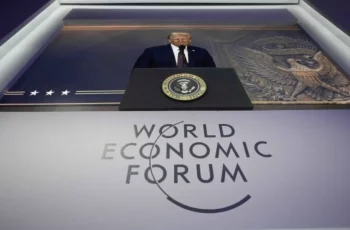
New contours of security architecture in the Indo-Pacific (IPR) are being formed in the context of the U.S.-China rivalry, referred to as strategic competition in the 2022 National Security Strategy (NSS). For regional actors, this dynamic is both a challenge and an opportunity to navigate the contradictions between Washington and Beijing. While maintaining economic relations with China, several countries have simultaneously deepened military and political cooperation with the U.S. Strengthening defense ties within alliances and bilateral agreements is emerging as a key trend in the IPR. The authors aim to define the role of American regional military policy and its implications for security architecture in IPR through traditional aspects, deliberately excluding cyberspace from consideration. To achieve this, the authors reference key strategic documents, actual policy measures, and the responses of allies.
The transformation of the American strategic vision from the Asia-Pacific Region (APR) to the Indo-Pacific was established in the NSS adopted by the Trump administration in December 2017. The “Free and Open Indo-Pacific” concept connects South Asia and the Indian Ocean region with the APR. The U.S. Defense Department’s 2019 Indo-Pacific Strategy report highlights that strategic competition between states, shaped by geopolitical rivalry over visions of free versus repressive world orders, poses the main national security challenge for the U.S. The document categorizes China as an advocate of the latter view, aiming to strengthen relationships with Asian security partners capable of countering “Chinese aggression.”
The Biden administration has maintained continuity regarding the IPR, reaffirming it in new relevant doctrines. In February 2022, the “Indo-Pacific Strategy of the United States” was released, asserting that the U.S. is an Indo-Pacific nation and that the region is strategically critical for America’s safety and prosperity. Much of the document focuses on cooperation with the Association of Southeast Asian Nations (ASEAN) as the central organization in the region, specifically mentioning allies such as the Philippines and Thailand, and regional partners like Indonesia, Malaysia, and Singapore. The document’s objectives include advancing freedom, strengthening ties, enhancing security, and increasing resilience against transnational threats. These goals were reiterated in the NSS published in October 2022, which emphasizes the significance of investing in “core strategic advantages” for the U.S. and revitalizing qualitative U.S.-led alliance networks in IPR. The official strategy underscores the necessity of Washington’s unquestionable primacy in the region and creating a counterbalance to Beijing. Additionally, the nuclear threat from North Korea plays a significant role in American interests in the region, as reaffirmed in their commitment to the denuclearization of the Korean Peninsula. Concerns stemming from the Russia-Ukraine crisis have also catalyzed military activity among various political entities, with NATO allies citing it as a reason for bolstering military capacity and enhancing security partnerships.
By the second anniversary of the IPR strategy, the White House issued a report assessing U.S. regional policy effectiveness. It confirms the U.S. commitment to achieving established goals and safeguarding the outlined values. Notable achievements include deepening trilateral cooperation with Japan and the Philippines, elevating bilateral relationships with Vietnam and Indonesia to comprehensive strategic partnerships, reaffirming commitments with Japan and South Korea for enhanced defense and security ties, close cooperation with India and Australia, and support for increased collaboration between European allies and Canada with the IPR countries. All these elements suggest that the U.S. is on the right path in its regional policy. Bipartisan support for this direction is underscored by the recent legislative proposal from Speaker of the House M. Johnson, which includes $8.12 billion in assistance for the IPR, despite Congress being paralyzed over funding for Israel, Ukraine, and Taiwan. This highlights the region’s priority for Washington, even amid challenging circumstances.
In terms of practical policy for achieving strategic objectives in the region, the U.S. employs a wide array of tools. The core approach involves forming alliances and regional initiatives with ideological underpinnings. Examples include the Quadrilateral Security Dialogue (QUAD), AUKUS, the CHIP-4 high-tech initiative, the NATO+AP-4 military-political grouping, the “Five Eyes” intelligence alliance, the “Indo-Pacific Economic Framework,” and “Partners in the Pacific.” Unlike China’s approach, each alliance includes some ideological core — a significant idea characterizing the partnership. These initiatives foster cooperation across various domains, promoting political dialogue, intelligence sharing, and enhancing military, technological, and economic capabilities among partners, while also involving several Euro-Atlantic actors alongside the U.S. Some of these alliances have existed for a long time, but the Biden administration’s renewed push, characterized as a surge of “pact mania,” is notable.
to be continued










Comments